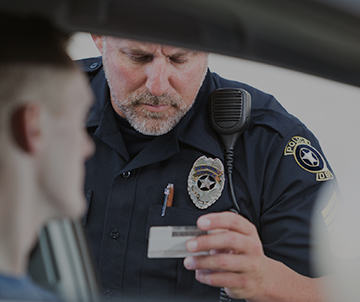A traffic stop can be one of the most intimidating moments for any person. It is even more intimidating when a person is suspected of driving under the influence of drugs or alcohol. This post is designed to show what happens when a person is suspected of operating a vehicle under the influence, commonly referred to as Driving Under the Influence, DUI, Impaired Driving, Operating a Vehicle Under the Influence, and/or OVI.
The process for investigating an OVI case is governed by the National Highway Traffic Safety Administration (NHTSA) manual on field sobriety testing. Attorney Chris Beck is certified under NHTSA the same as police officers. This certification assists us in protecting our clients in OVI cases. For a free initial consultation contact us at (937)426-4000. It is important to know that many jurisdictions have video cameras on the cruiser that can capture all of the items discussed in this post.
The 3 Phases of an OVI/DUI Investigation
There are three phases of an OVI investigation. Those three phases are
- Vehicle in Motion
- Personal Contact
- Pre-Arrest Screening
Vehicle in Motion
This phase is all about the movement of the vehicle. For example if the officer witnesses the person fail to use their turn signal, weaving outside of the lane of travel, or speeding. The first step is the officer witnessing what they believe is a traffic violation or reason to suspect that a person may be impaired. The officer cannot initiate a traffic stop without probable cause to believe that a violation has been committed. Once the officer witnesses the traffic violation and decides to stop the motor vehicle the officer will likely turn on his strobe lights to pull the vehicle over. The vehicle in motion phase continues until the vehicle has come to a complete stop. This phase includes did the driver slow down once the lights were turned on, did the driver navigate a safe stop to the side of the road, did the driver strike a curb or other object when pulling over, did the driver use their turn signal when pulling over, and many other factors.
Personal Contact
This phase begins after the individual has been stopped and the officer approaches the driver. During this phase the officer is looking for any indication that a person may be under the influence of drugs or alcohol. Common factors are slurred speech, odor of alcohol, blood shot or glassy eyes, trouble answering the officer’s questions, whether there is an open container in the vehicle, a person appears disoriented or disheveled. This phase is the first step in what is called the divided attention tests. This is where the officer will ask you for your license, insurance, registration and while the driver is looking for these items the officer will continue to ask questions to see if the driver can perform more than one task at a time. Common things we see during this phase is a person has trouble providing their driver’s license, handing the officer a credit card instead of a license, leafing through papers multiple times to find the documents requested, or stopping to look for the documents in order to answer additional questions. The officer will also likely ask if the driver has had anything to drink. The officer at the conclusion of this stage determines whether they are going to remove the driver from the vehicle to have them perform standardized field sobriety tests that will be outlined in phase three below.
Pre-Arrest Screening (a.k.a. Field Sobriety Testing)
This phase begins with the officer asking the driver to get out of the vehicle. The officer will often pat the driver down to make sure the driver does not have any weapons on them that could create a risk of harm to the officer. There are three standardized field sobriety tests that are approved by NHTSA. Those tests are the Horizontal Gaze Nystagmus, One Legged Stand, and Walk and Turn. We will cover the specific details of the three field sobriety tests in upcoming blog posts. These tests are looking for signs of impairment and are also designed to be divided attention tests which looks to see if a person can remember the instructions and can perform the tests. It is important to note that the officer must instruct and perform these tests in substantial compliance with the recognized standards set forth in the NHTSA manual.
Conclusion
If you are charged with operating a vehicle under the influence in Ohio you should immediately contact an experience defense attorney to assist you. You have a right to contact your lawyer prior to agreeing to take any field sobriety tests or chemical tests. We are available 24/7 by contacting us at 937-426-4000.

